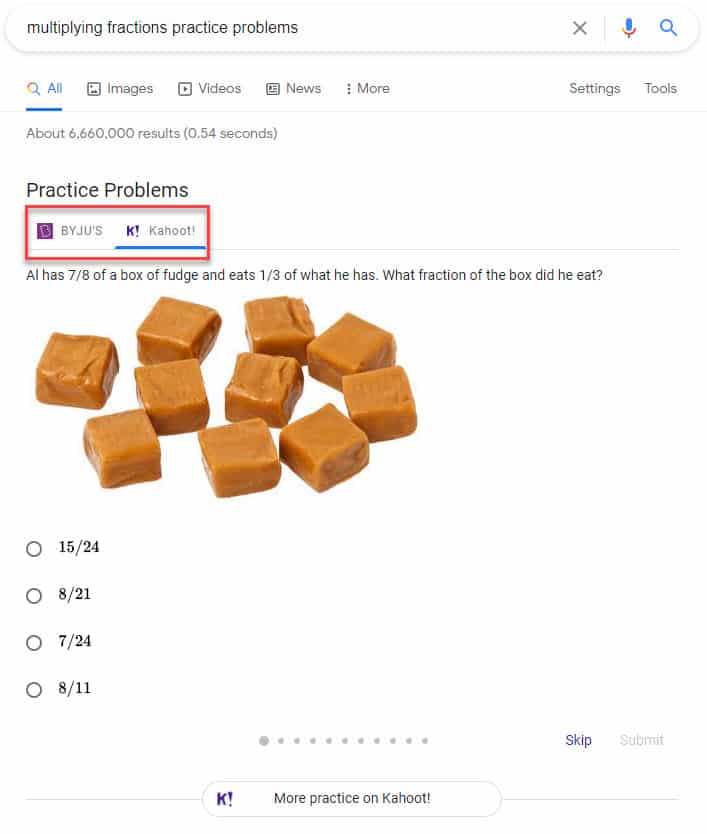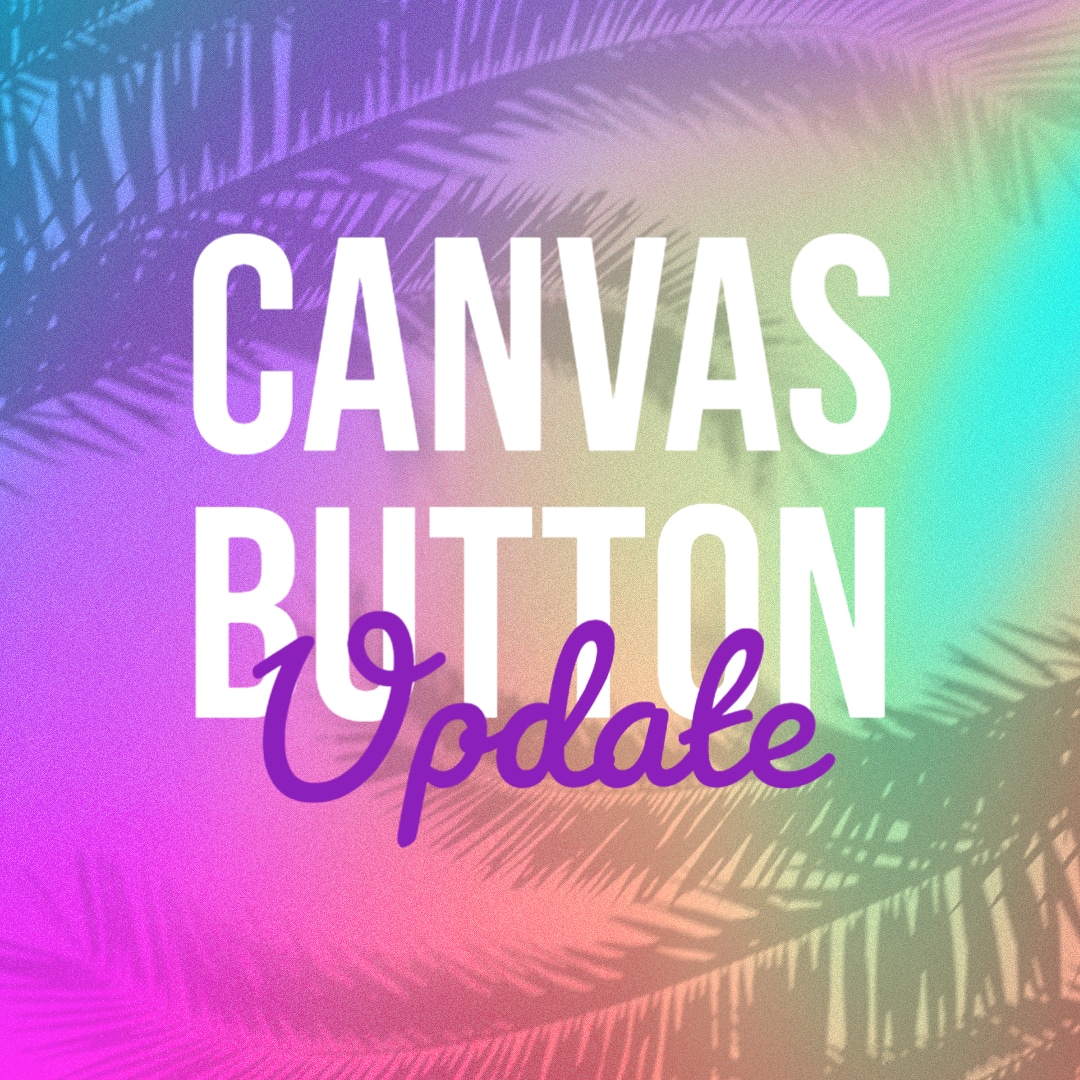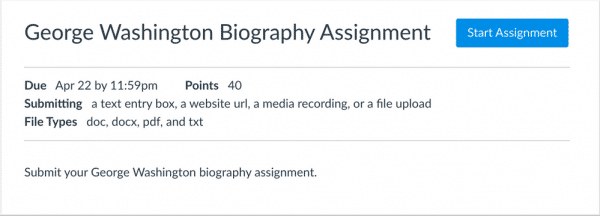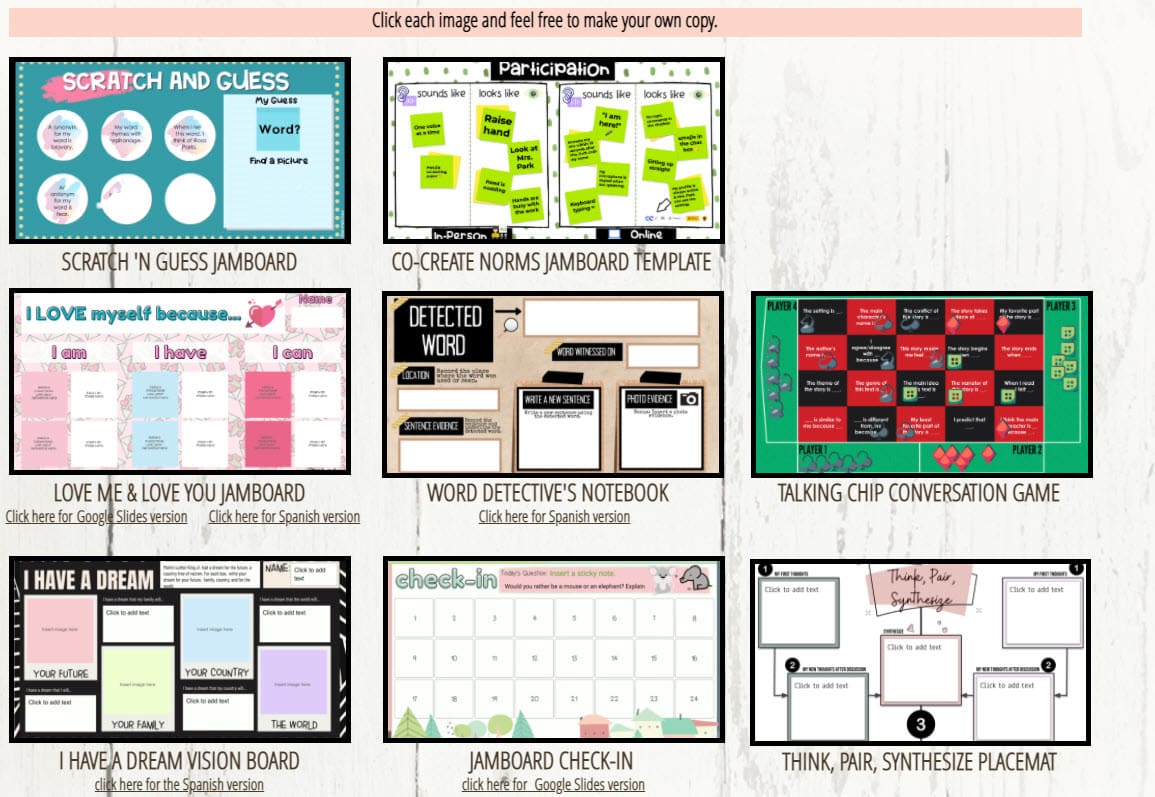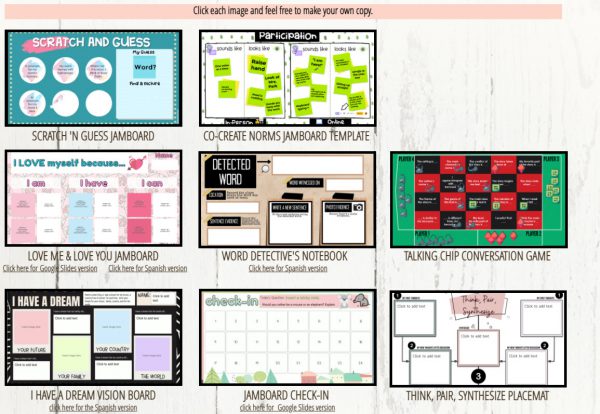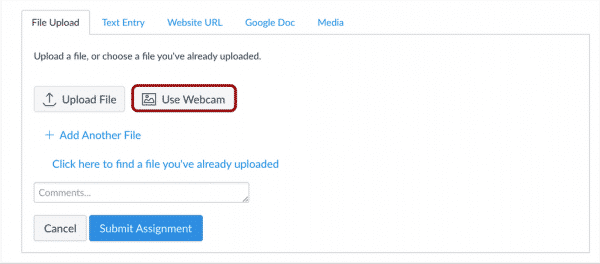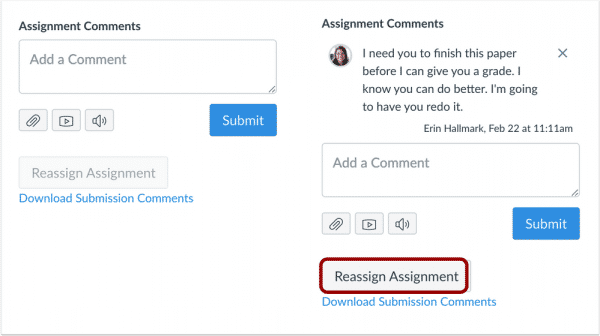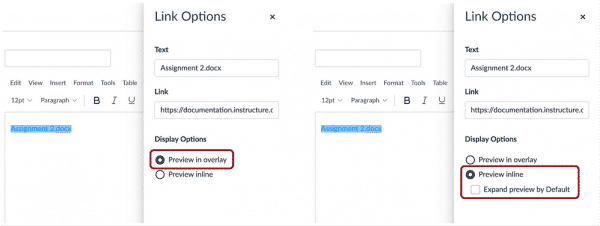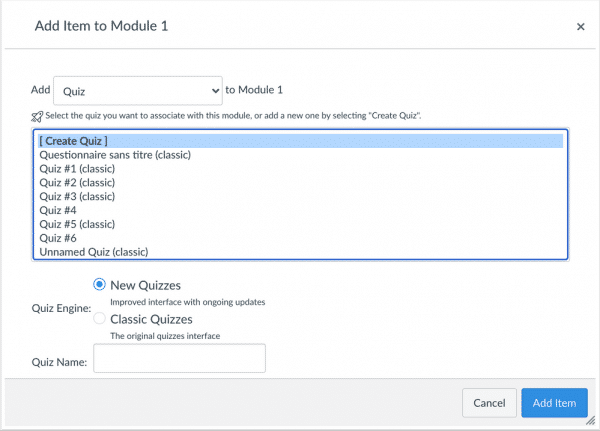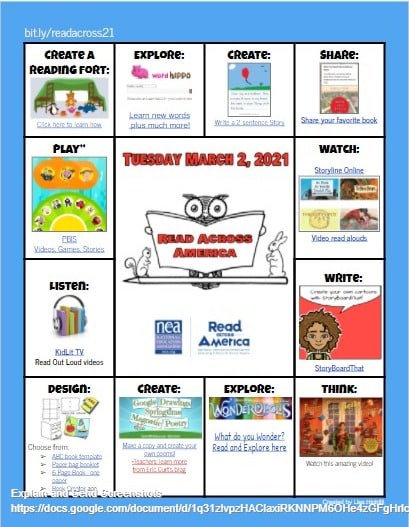If you or your students are looking for practice and immediate feedback, look no further than Google. For example, if you type “FOIL practice problem” in the Google search bar, students and teachers can find topic explanations and practice problems right on the results page. See the image below for sample results from such a search.
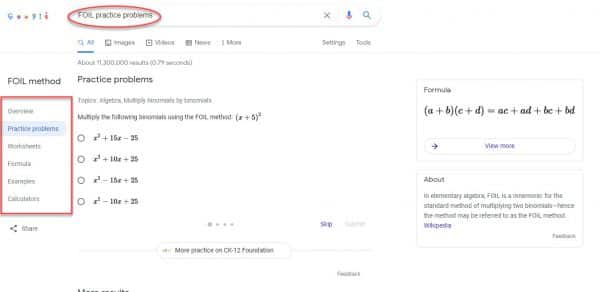
These particular problems are sourced from ck-12, a reputable open-education resource.

Other topics you search for may come up with practice problems from other recognizable resources like Kahoot!
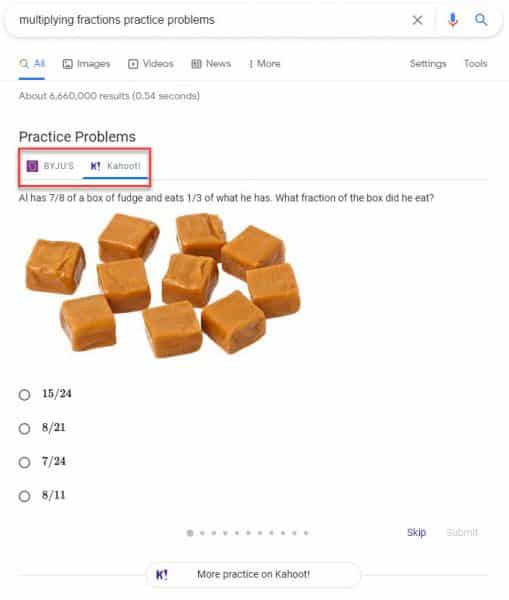
This can be a quick resource for students that need some extra support or are studying for upcoming tests. Math and science topics seemed to be most successful in getting results.

